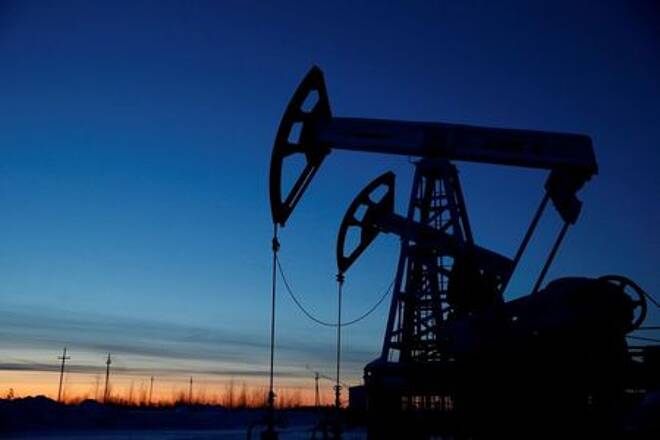Advertisement
Advertisement
Oil Eases as Weak Asian Data, More Lockdowns Dampen Demand Hopes
By:
NEW YORK (Reuters) -Oil prices weakened for a fourth session on Tuesday, on the back of surging cases of coronavirus in Japan, a weak demand picture in Asia and a belief in OPEC and among its allies that the market does not need more crude.
Brent crude was down 39 cents, or 0.6%, at $69.12 per barrel as of 1:15 p.m. ET (17:15 GMT.) U.S. West Intermediate crude (WTI) fell 64 cents, or 1%, to $66.65 a barrel. Both contracts had fallen for three straight sessions.
“We continue to see $65 support in WTI but less forceful rebounds that see sellers pour in earlier,” said Craig Erlam, senior market analyst at OANDA.
“A move below here would be a significant technical breakout and surely reflect serious concerns about growth in the coming months as Delta (coronavirus variant) causes increasing restrictions around the world.”
Japan, the world third largest economy, extended its state of emergency in Tokyo and other regions on Tuesday and announced new measures covering seven more prefectures to counter a spike in COVID-19 infections that is threatening the medical system.
Meanwhile New Zealand entered a new lockdown after the country’s first coronavirus case in six months was reported.
Hedge funds and money managers cut net long positions in U.S. crude to the lowest since November in the week to Aug. 10 as resurgent coronavirus infections in several countries dampened hope for of a rapid resumption in long-distance air travel.
“The oil market will likely require a distinct down trend in the virus that will allow China to reopen its economy,” said Jim Ritterbusch, president of Ritterbusch and Associates in Galena, Illinois. This would permit the energy market to establish support and stem the number of bullish positions being unwound.
Daily crude processing in China, the world’s biggest oil importer, fell to its lowest in July since May 2020 as independent plants slashed production amid tighter quotas, high inventories and weakening profits, data showed on Monday.
China’s factory output and retail sales growth also slowed sharply and missed expectations in July, as new COVID-19 outbreaks and floods disrupted businesses.
On the supply side, U.S. shale oil output is expected to rise to 8.1 million barrels per day (bpd) in September, the highest since April 2020, according government data on Monday.
U.S. crude inventory data from industry group American Petroleum Institute was due at 4:30 p.m. ET.
Nine analysts polled by Reuters estimated, on average, that crude stocks slipped by about 1.1 million barrels in the week to Aug. 13.
Last week, U.S. President Joe Biden’s administration urged OPEC+, which groups members of the Organization of the Petroleum Exporting Countries and other producers such as Russia, to boost oil output to tackle rising gasoline prices.
But four sources told Reuters on Monday that the group believes oil markets do not need more crude than they plan to release in the coming months.
For a look at all of today’s economic events, check out our economic calendar.
(Additional reporting by Shadia Nasralla and Yuka Obayashi; Editing by David Evans and Mark Heinrich)
About the Author
Reuterscontributor
Reuters, the news and media division of Thomson Reuters, is the world’s largest international multimedia news provider reaching more than one billion people every day. Reuters provides trusted business, financial, national, and international news to professionals via Thomson Reuters desktops, the world's media organizations, and directly to consumers at Reuters.com and via Reuters TV. Learn more about Thomson Reuters products:
Did you find this article useful?
Latest news and analysis
Advertisement
